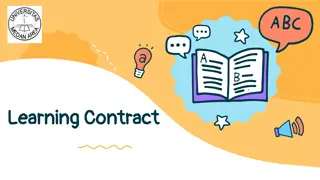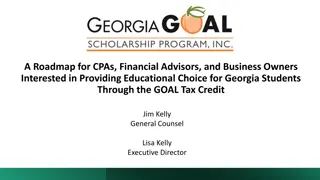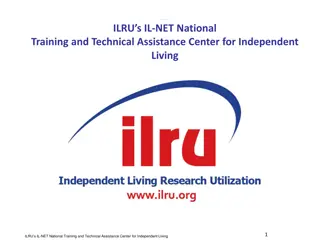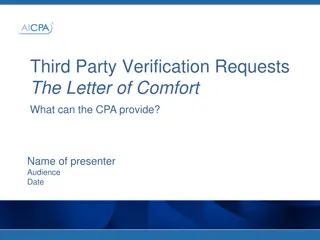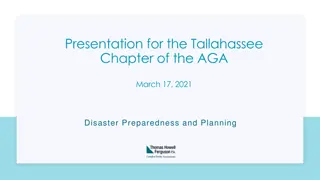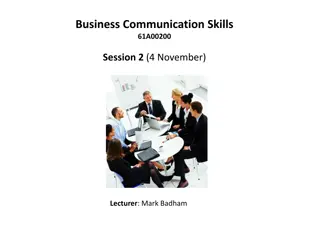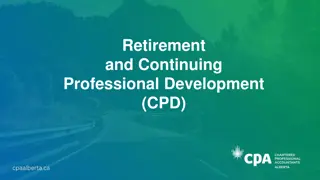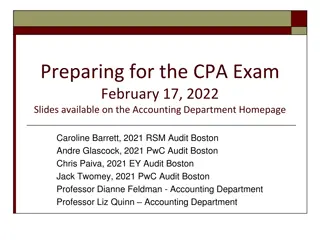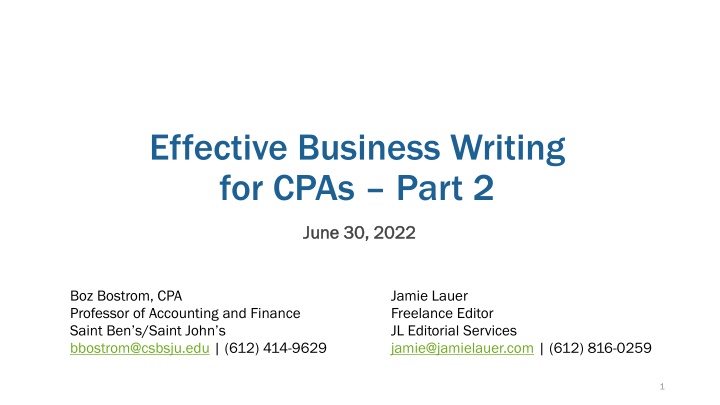
Effective Business Writing Strategies for CPAs: Enhancing Communication Skills
Enhance your communication skills with this informative session on effective business writing for CPAs. From structuring emails to using social media, learn valuable tips to improve your correspondence. Get insights on writing emails, addressing recipients, utilizing headers, and more to elevate your professional communication.
Uploaded on | 1 Views
Download Presentation

Please find below an Image/Link to download the presentation.
The content on the website is provided AS IS for your information and personal use only. It may not be sold, licensed, or shared on other websites without obtaining consent from the author. If you encounter any issues during the download, it is possible that the publisher has removed the file from their server.
You are allowed to download the files provided on this website for personal or commercial use, subject to the condition that they are used lawfully. All files are the property of their respective owners.
The content on the website is provided AS IS for your information and personal use only. It may not be sold, licensed, or shared on other websites without obtaining consent from the author.
E N D
Presentation Transcript
Effective Business Writing for CPAs Part 2 June 30, 2022 June 30, 2022 Boz Bostrom, CPA Professor of Accounting and Finance Saint Ben s/Saint John s bbostrom@csbsju.edu | (612) 414-9629 Jamie Lauer Freelance Editor JL Editorial Services jamie@jamielauer.com | (612) 816-0259 1
Logistics Polling questions throughout the meeting Required for CPE If you have issues answering the polling questions, please chat or email across your answers 2.0 CPE hours (Specialized Knowledge Technical) Partial credit available minimum of 1.0 hours Questions (and tips) are very welcome; submit through the chat at any time Course evaluation will be emailed immediately after the session CPE certificate will be emailed by the end of the day tomorrow 2
Learning objectives/agenda Understand how to write clear, concise, and courteous emails Understand how to structure letters and reports Understand how to effectively use texting and instant messaging Understand effective writing strategies when using social media Understand common grammar errors 3
What kinds of emails can grab your attention? 6
Headers Use a strong and clear subject line Cc use to keep people in the loop Understand the preferences of those you work with Avoid cc ing people to make the recipient look bad Bcc not used a lot; keeps someone in the loop without the recipient being aware Some recipients may feel a bit blindsided if they find out you were using bcc without their knowledge 7
Opening Address the recipient by name whenever possible; first names are generally fine, but when in doubt, use Mr., Ms., Mx., or a title (like Dr.) Understand your audience and how formal they prefer to be Address the messages very carefully; when typing a sensitive email, don t put in the email address until the end A sentence to build rapport may be appropriate for someone with whom you don t communicate much or haven t talked to in a while Don t simply make a demand Your opening paragraph should have your purpose/request and, often, your conclusion 8
Body Short paragraphs, short(er) sentences, and not too long overall Have a new paragraph for each new topic or idea Oftentimes we are writing to request information, so we should list out those requests using bullet points, numbers, or paragraphs Other times we are writing to support our overall conclusion; we should use a new paragraph for each supporting point 9
Body Each paragraph should have a strong topic sentence, and everything else written in that paragraph should be in support of that topic sentence Whenever possible, use specific details, numbers, figures, names, etc. Put the most important points first (for example, if you have three reasons for making a recommendation, put the most important reason first) Why? Assume your reader is only going to read part of your document, so hit the big points up front! If you are addressing counterarguments or talking about why you did not recommend an option, put that after you make supporting points in favor of your argument 10
Ending Remind the reader of exactly what you are hoping they will do, if anything Often you will be requesting action, but be courteous and consider the recipient s level of authority Consider personalized sign-offs What do you think when someone always signs their emails the same way (e.g., Cheers, Bill)? Popular closings thanks, best, best regards, regards, sincerely, take care, thanks so much, cheers, all the best, best wishes, respectfully, talk soon, sincerely yours What do you use? Consider a standardized signature that includes your company, title, and contact info 11
Poll #1 What is the biggest problem you see with emails? a. Unclear b. Too long c. Not respectful d. Emailing a question instead of asking it verbally e. None of the above 12
Problems with emails Clarity take extra care to write clearly; your reader can t ask questions in real time like they could with a phone call or an in-person dialogue Length people do not expect emails to be super lengthy (an attached Word document/memo would be okay); if you re having trouble communicating what you need to concisely, consider a phone call or stopping by to talk instead Respect pay extra attention to your word choice; your reader can t see your face or hear your tone, so it s easier for them to read negativity into an email Manners if you are making a request, your email should include please and thank you Common sense if you are sitting 10 feet from someone, try to avoid sending them an email unless it is something like I have a question to discuss. Would you please let me know when you may have 10 minutes? 13
Problems with emails Angry emails what advice would you give someone who is about to send an angry email? Sit on it, oftentimes for at least a day Sometimes you ll find it is better to send nothing Ask someone else to review it Ask yourself if you would say it in person Keep in mind emails provide a permanent record and are easy to forward; assume the entire world will see your email Thus, how should you communicate sensitive information? 14
Problems with emails Avoid clich s/condescending comments Please find attached Thank you in advance I look forward to hearing from you Per our conversation I hope you are doing well To whom it may concern Sorry for the late reply Don t overuse exclamation marks!!! 15
Replying to emails Always try to reply within 24 hours, even if all you can say is that you are busy and need a couple of days to give a full reply Bad news is better than no news! 16
Scheduling emails Be careful about making requests or sending bad news in the evenings or on weekends Draft it, but schedule it to send during business hours 17
Formatting letters and reports Microsoft Word pro tips 18
What formatting troubles do you experience frequently in Word? 19
Formatting Margins on the Layout tab Useful for tweaking the amount of content that fits on one page 20
Formatting Styles and headers are fast ways to format 21
Formatting Adjust space between paragraphs and lines with the Paragraph settings More precise and consistent than manual paragraph returns 22
Formatting Use Page Breaks on the Insert tab to start a new page in the document more accurate than full returns! 23
Useful shortcuts Shift Shift- -Arrows Ctrl Ctrl- -C C copy Ctrl Ctrl- -X X cut Ctrl Ctrl- -V V paste Ctrl Ctrl- -F F find and replace Ctrl Ctrl- -B B bold text Ctrl Ctrl- -U U underline text Ctrl Ctrl- -I I italicize text F7 F7 spell-check Arrows select text 24
Review tools Spell-check and Grammarly Tip: If Word is not underlining misspelled words, check the Proofing Tip: If Word is not underlining misspelled words, check the Proofing options under File > Options options under File > Options Good for catching the most obvious mistakes Things to keep in mind: Review every suggestion vs. blindly accepting Do not let these replace your direct review of what you ve written 25
Poll #2 How often do you collaborate with someone else on a writing project? a. Very frequently b. Frequently c. Infrequently d. Very infrequently e. Not applicable 26
Collaborating Track changes 27
Collaborating Track changes 28
Adjusting view of track changes 29
Adjusting view of track changes 30
Navigating changes You can jump straight to any changes in the document There s also a way to accept all changes in the document 31
Collaborating Comments 32
Navigating comments Next and Previous buttons are useful especially for longer documents jumps you right to the comments in the document so you don t have to search for them 33
Poll #3 How often do you write reports of a more technical nature? a. Regularly b. Sometimes c. Almost never 35
Structuring letters and reports Follow the same principles for email writing Make sure the most important information (why you are writing, why what you are writing is important to pay attention to, what actions need to be taken after reading) is in the introduction and conclusion If someone were to read only the introduction and conclusion of your letter/report, would they get the gist? Put the nitty gritty details and support for the conclusions of the letter/report in the body paragraphs 36
Other tips Keep your audience in mind Keep in mind that letters and reports need to use a more formal tone than emails Avoid jargon/specialized terminology (or define if needed) Define acronyms Example What would AR stand for? Accounts receivable (AR) Be precise leave no room for misunderstanding 37
Other tips Transition between ideas Can be a single word, short phrase, or a full sentence Two keys to using transitions Use the correct transition Example Tom and Jodi presented our proposal to the client. Thus, the client accepted the proposal of another service provider. Do not overuse transitions 38
Report formats Consider various approaches/sections: Summary, Details (organized by section) Summary, Findings, Recommendations, Plans 39
Grammar tips Part 2 40
Disclaimers Different style guides say different things US American English vs. British English Context matters Language is always evolving 41 Photo by Martin Sanchez on Unsplash
Poll #4 When you hear the word grammar, what emotion does it trigger? a. Excitement b. Anxiety c. Dread d. Indifference e. None of the above 42
Why wouldnt you want to date an apostrophe? They re too possessive. Mine! s s 43
Tip #6 Apostrophes usually indicate possession Generally, do not use when making acronyms or numbers plural CPAs IRAs The 1970s 44
Which sentence is correct? Sentence A Sentence A The report claimed that anyone could use the help of an accountant. Sentence B Sentence B The report claimed that anyone could use the help of an accountant . 45
Tip #7 Pay attention to placement of quotation marks with other punctuation Periods and commas always go inside quotes With question marks and exclamation marks, it depends on whether the quote or the sentence introducing the quote is asking the question/ making the exclamation Did the controller say, Accounting is the best ? I heard the controller ask, Is accounting the best? Citations generally use quotations to complete the phrase, then parentheses with the citation, then a period The tax law indicates that we may claim a loss for the investment: There shall be allowed as a deduction any loss sustained during the taxable year and not compensated for by insurance or otherwise (IRC Section 165). 46
Which sentence is correct? Sentence A Sentence A I need the report that you were working on last week. Sentence B Sentence B I need the report which you were working on last week. 47
Tip #8 Distinguish between that and which That essential information Johnny filled a cup and, as always, left no room for the pollutant that others referred to as cream. Another example I need the report that you were working on last week. 48
Tip #8 Distinguish between that and which Which nonessential information, always preceded by a comma Johnny filled a cup and, as always, left no room for cream, which was nothing more than a pollutant, in his opinion. Another example I need to see the Q4 report for them, which I know you were working on last week. 49
Which sentence is correct? Sentence A Sentence A It was time to review second quarter earnings. Sentence B Sentence B It was time to review second-quarter earnings. 50

